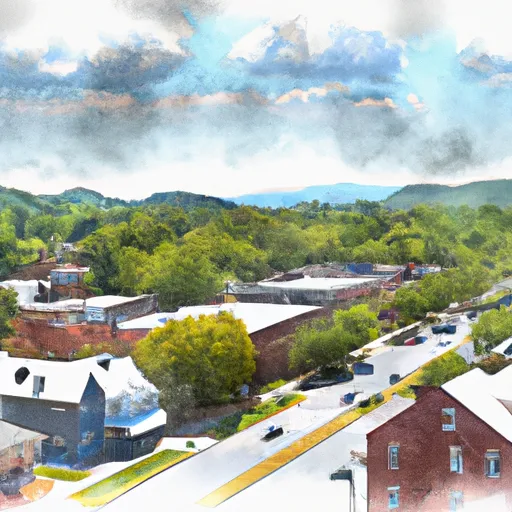°F
°F
mph
Windspeed
%
Humidity











Raven, Virginia is a small town located in southwestern Virginia, nestled within the picturesque Clinch River Valley. The region has a humid subtropical climate, characterized by hot summers and mild winters. It experiences moderate rainfall throughout the year, which helps maintain the lush greenery of the surrounding area.
The hydrology constituents of Raven are primarily influenced by the Clinch River, which flows nearby. The river serves as a vital water source and supports a diverse ecosystem. It is known for its clean water and is home to various aquatic species, making it a popular spot for fishing and boating enthusiasts.
With its beautiful natural surroundings, Raven offers ample outdoor recreation opportunities. The Clinch River State Park, located nearby, provides visitors with opportunities for hiking, camping, and picnicking. The park also has several scenic overlooks that offer stunning views of the river and its surroundings.
Additionally, Raven is within close proximity to the Jefferson National Forest, which offers miles of trails for hiking, mountain biking, and wildlife viewing. The forest is known for its diverse flora and fauna, providing nature lovers with a chance to explore and connect with the great outdoors.
In conclusion, Raven, Virginia, with its pleasant climate, abundant hydrology constituents, and proximity to natural attractions, offers a range of outdoor recreational opportunities for visitors and residents alike.
Weather Forecast
Raven receives approximately 1165mm of rain per year, with humidity levels near 85% and air temperatures averaging around 12°C. Raven has a plant hardyness factor of 6, meaning plants and agriculture in this region thrive during a short period during spring and early summer. Most plants will die off during the colder winter months.
Regional Streamflow Levels
968
Cubic Feet Per Second
17,800
Cubic Feet Per Second
4,170
Cubic Feet Per Second
199
Cubic Feet Per Second
Nearby Camping
| Camping Area | Reservations | Toilets | Showers |
|---|---|---|---|
| Lake James State Park | |||
| Panther State Forest | |||
| Jacobs Creek Rec Area | |||
| Backbone Rock Rec Area | |||
| Julian Price - Blue Ridge Parkway | |||
| Beartree |



